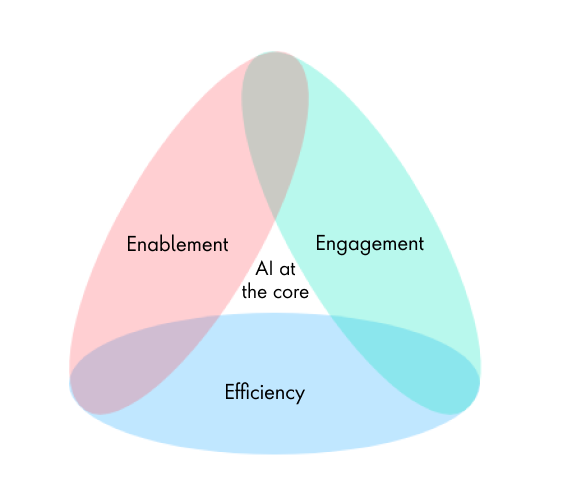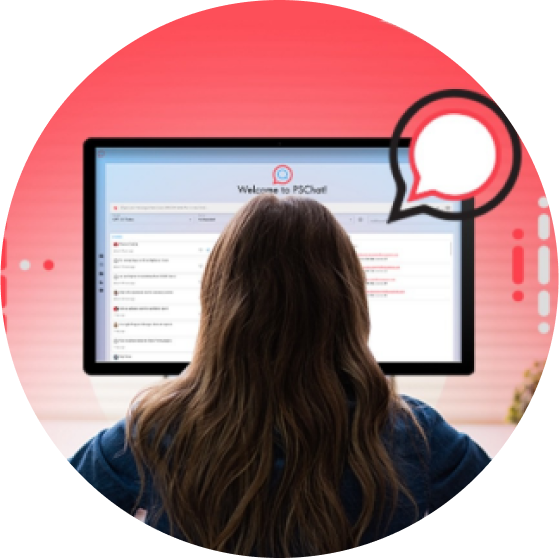How can businesses adopt generative AI at the core?
Leaders must first understand the full potential of generative AI and what their business can gain from it. They should build a narrative on the value AI will bring that is compelling enough to gain company alignment. Next, they must build a strategy around generative AI and integrate it into business functions for decision-making.
Generative AI can quickly analyze information and provide valuable insights by:
- Leveraging market trends, customer behavior and sales forecasting to plan campaigns and prioritize resources
- Simulating business scenarios so that leaders can make appropriate decisions based on shifting needs and priorities
- Analyzing employee feedback/sentiment to help leaders quickly identify operational areas that are strong and those that need improvement
- Helping build an empowered workforce
What is generative AI’s impact on employee creativity?
A fully integrated AI strategy at the heart of operations and processes fuels employee creativity in their day-to-day work. It reduces mundane tasks and give employees the ability to focus on problem-solving opportunities.
Such creative gains are only possible when businesses equip their employees with the right tools. As a tool that generates new content, generative AI supports labor at all stages of creative production, including ideation, first drafts, mock-ups and even final proofing.
Yet no matter the production stage, the result is the same: Generative AI does not displace employees’ labor; it helps them complete assignments faster. By reducing the time it takes for employees to complete creative tasks, generative AI gives them more time to take on new ones. Ultimately, this enhanced, scalable efficiency helps AI-optimized businesses gain a competitive advantage.
How businesses can experiment with AI















